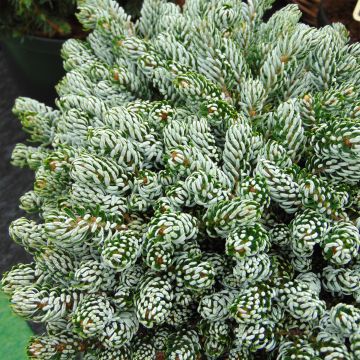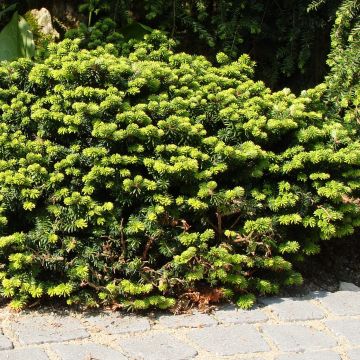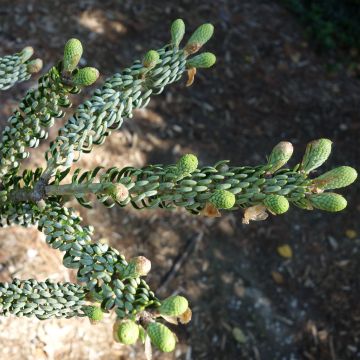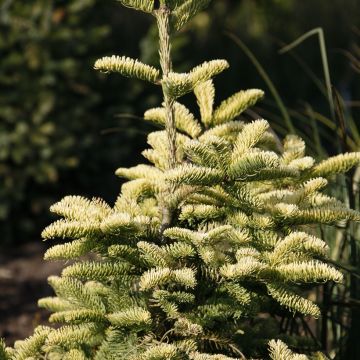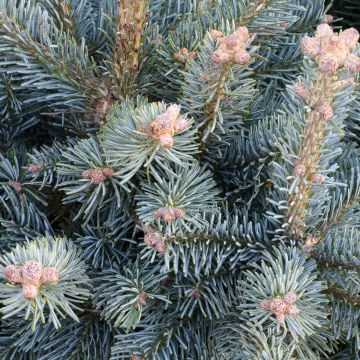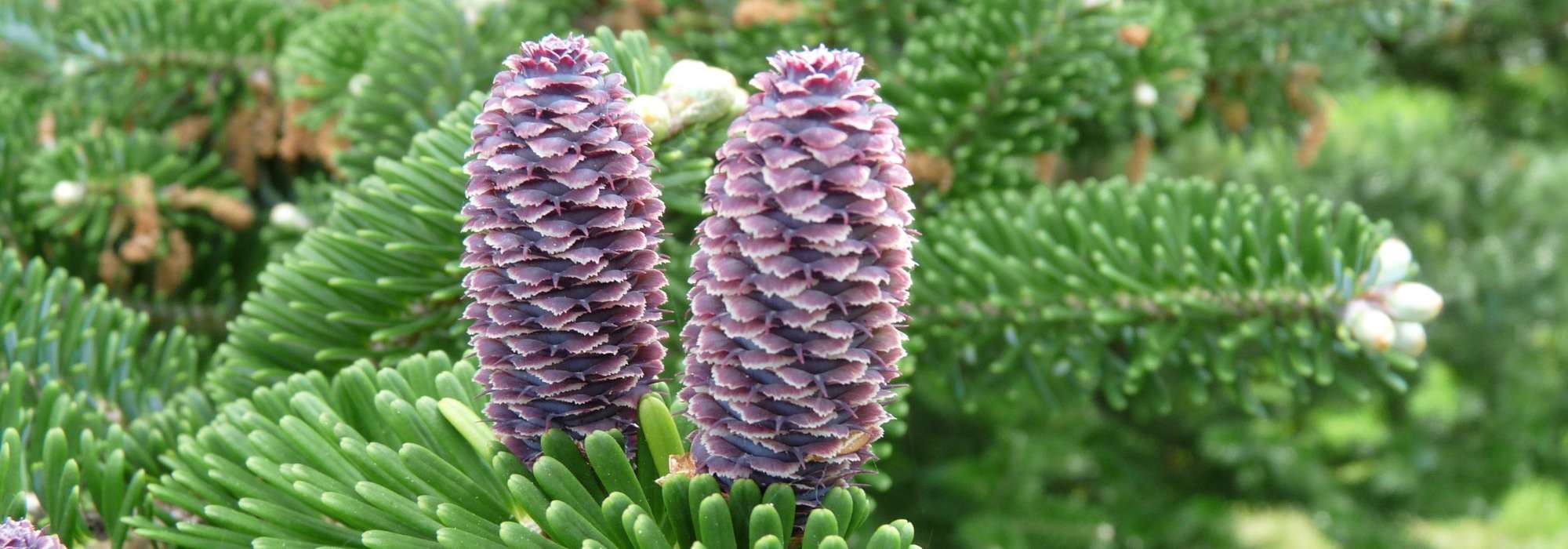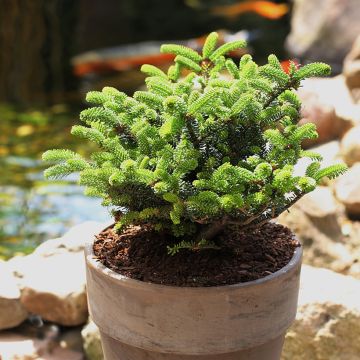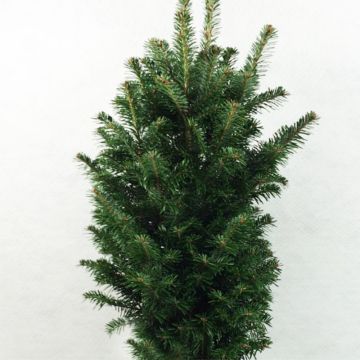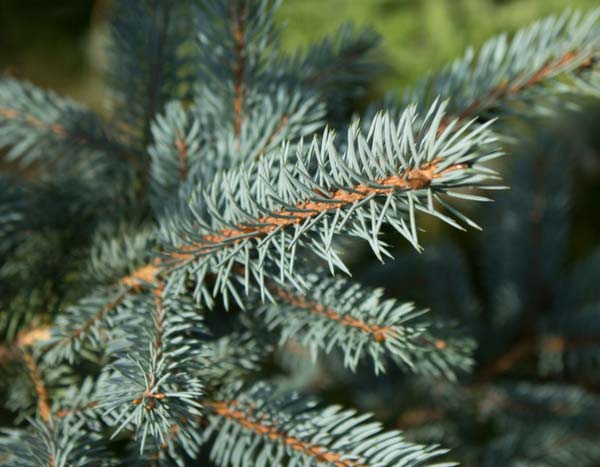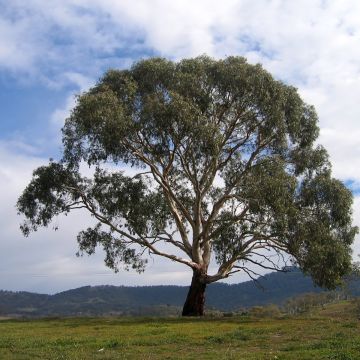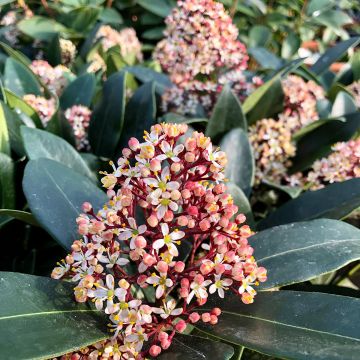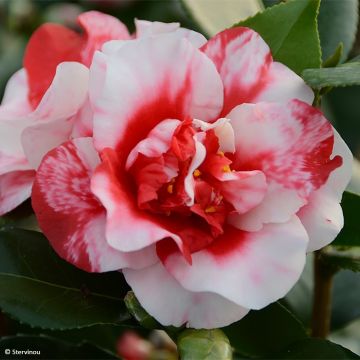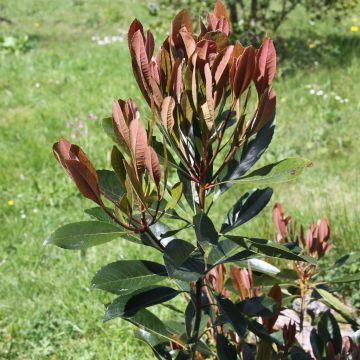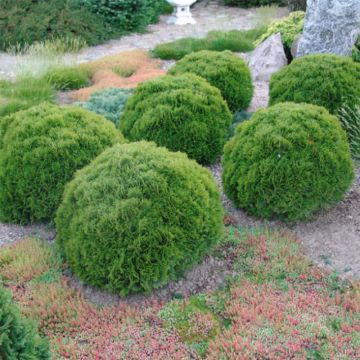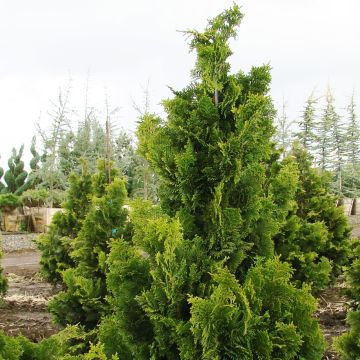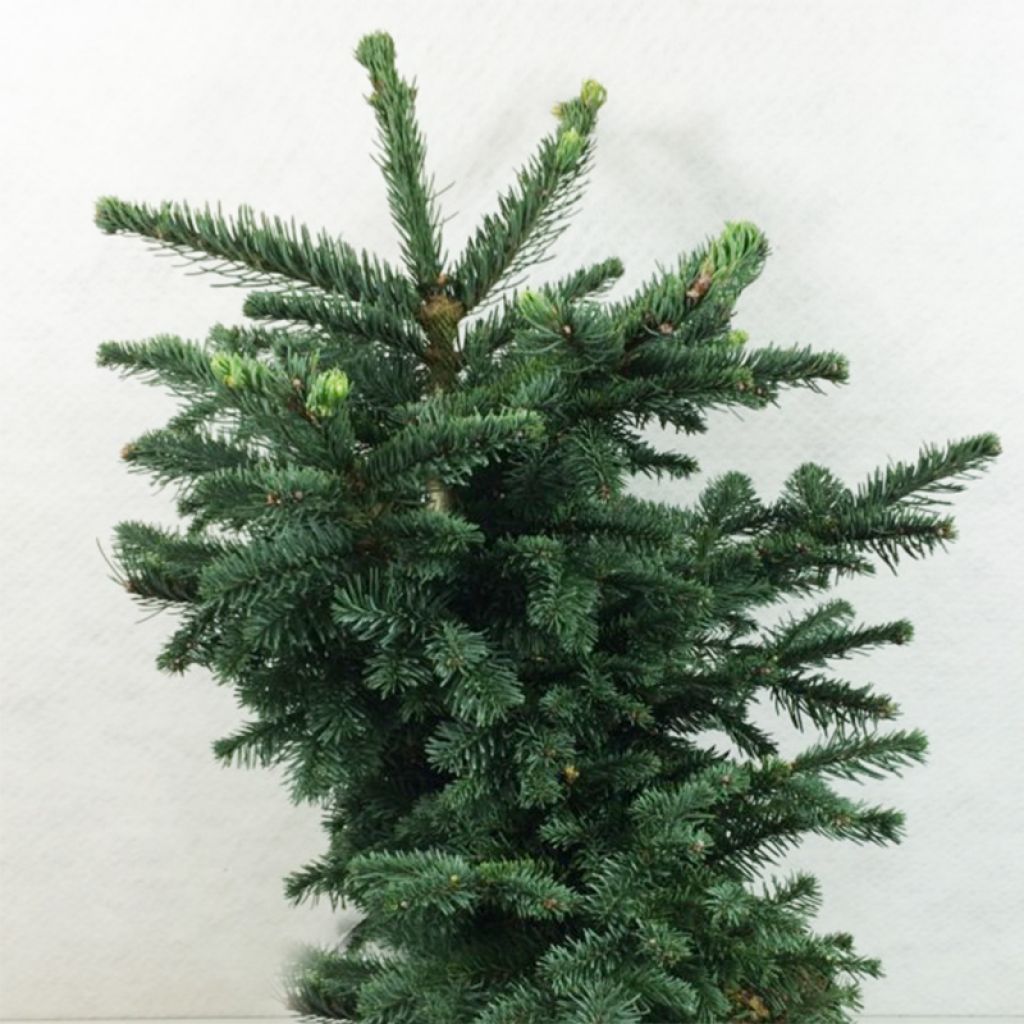

Abies procera Bizarro - Sapin noble nain
Abies procera Bizzarro - Fir
Abies procera Bizzarro
Noble Fir
Special offer!
Receive a €20 voucher for any order over €90 (excluding delivery costs, credit notes, and plastic-free options)!
1- Add your favorite plants to your cart.
2- Once you have reached €90, confirm your order (you can even choose the delivery date!).
3- As soon as your order is shipped, you will receive an email containing your voucher code, valid for 3 months (90 days).
Your voucher is unique and can only be used once, for any order with a minimum value of €20, excluding delivery costs.
Can be combined with other current offers, non-divisible and non-refundable.
Why not try an alternative variety in stock?
View all →This plant carries a 24 months recovery warranty
More information
We guarantee the quality of our plants for a full growing cycle, and will replace at our expense any plant that fails to recover under normal climatic and planting conditions.
Would this plant suit my garden?
Set up your Plantfit profile →
Description
Abies procera 'Bizarro' is a dwarf form of the noble fir. It forms a small tree with an irregular habit, initially rounded then pyramidal, covered with distinctly bluish foliage with silver highlights. It grows prostrate on the ground, producing over time densely packed, tiered branches that make up a miniature fir tree. Hardy and slow-growing, it appreciates moist, non-chalky soils in sun or partial shade. Its slightly twisted silhouette is perfect for a rockery, a rocky slope, the decoration of a small Japanese garden or a beautiful pot.
Abies procera, sometimes called the noble fir, is a high-altitude conifer from the pinaceae family, native to the United States. It is found in the mountainous and humid regions of the Cascade Range, the coastal ranges of the Pacific from extreme northwestern California, through Oregon and the state of Washington. In nature, this species can reach heights of 40 to 70 metres (131 to 230 feet) and has a narrow conical habit.
'Bizarro' is a dwarf form that does not exceed 1.5 metres (5 feet) in height and 70 cm (28in) in width, after 10 years. This small tree has a short, straight trunk and irregular, low and widely spread branches. Its growth is very slow, it first forms a ball before developing a pyramidal branching structure. Its very fine needle-shaped leaves are an intense blue-green to silvery blue, rounded at their tips and spirally arranged on the stem, slightly twisted towards the top of the stem. The overall appearance is of small, soft and bright brushes. Its grey bark is smooth and covered with resin balls, becoming reddish-brown, rough and fissured on mature subjects.
Abies procera 'Bizarro' is ideal for filling the ground of a large rockery, a slope, or a small garden, thanks to its slow growth and small size. With its bonsai-like silhouette, it will work wonders in a Japanese garden, especially if planted in groups of 3. The architectural qualities of dwarf conifers naturally come into play in the design of a contemporary garden, which prefers the aesthetics of shapes, silhouettes and textures over that of flowers. These plants provide permanence, structurally enhance a bed, mark pathways, and border terraces, easily replacing the strong presence of trimmed boxwood. They serve as a backdrop for small roses, peonies, or tousled grasses with complementary forms. They can also be associated with ground cover plants such as aubrietas, ceraistes, and flowering shrubs. The key is to play with volumes and colours.
Abies procera Bizzarro - Fir in pictures
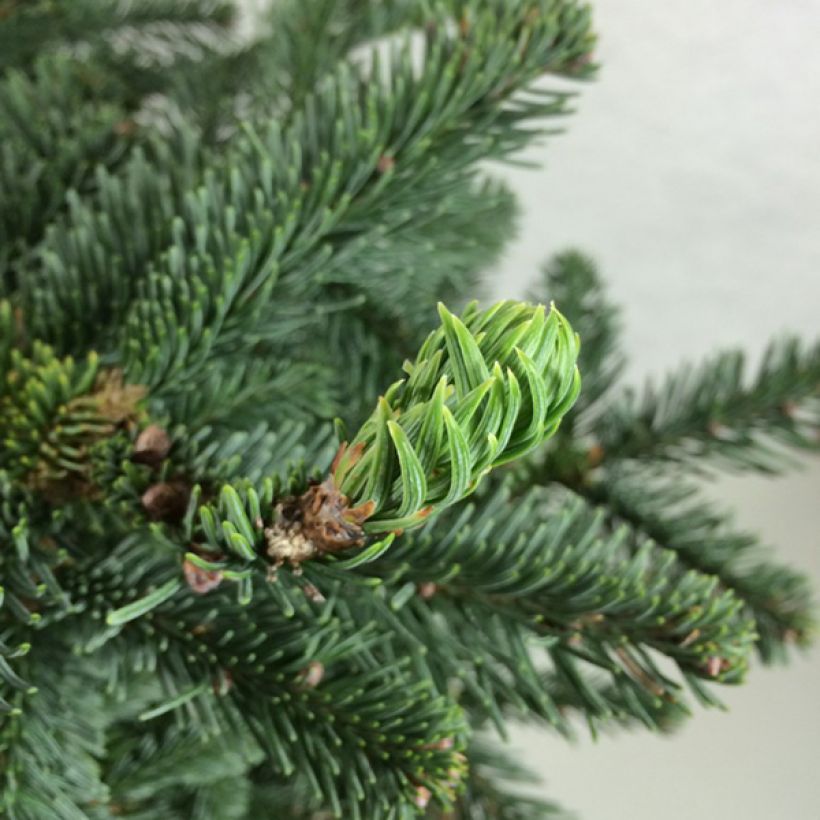

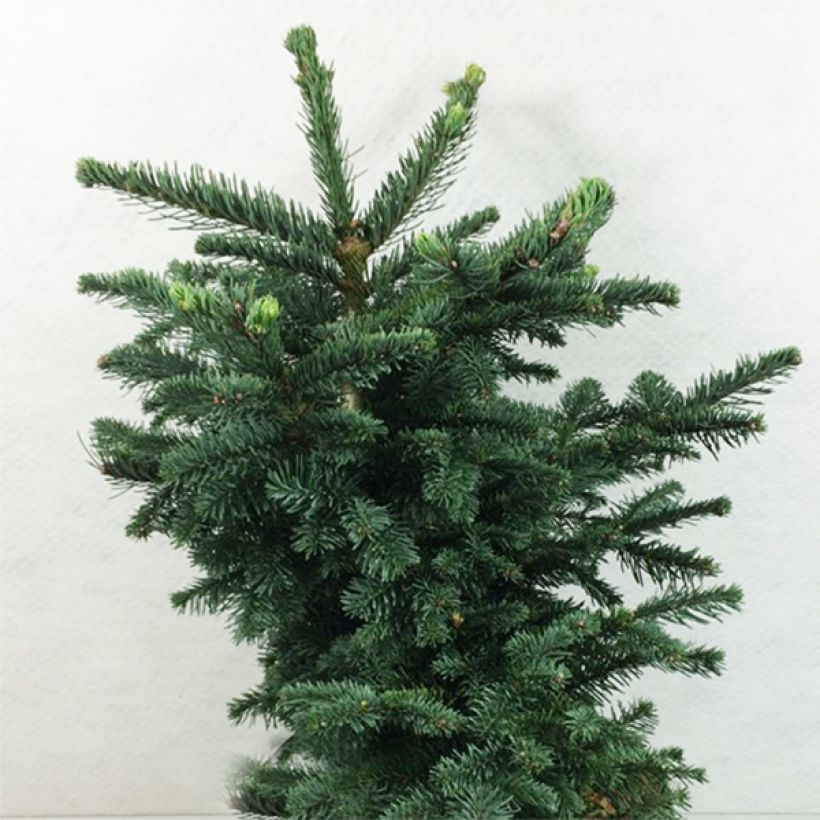

Plant habit
Foliage
Botanical data
Abies
procera
Bizzarro
Pinaceae
Noble Fir
Cultivar or hybrid
Other Abies
View all →Planting and care
Abies procera 'Bizarro' should be planted in spring or autumn, in soil that retains some moisture, is rich in humus and slightly acidic or neutral. This small conifer thrives in non-burning sun or partial shade. Water the plants regularly in the months following planting. The dwarf noble fir does not tolerate heat or drought, it is a species preferring mountain or cool and humid coastal climates. This bush does not require pruning, but any unsightly or obstructive branches can be removed to enhance its shape.
Planting period
Intended location
Care
Planting & care advice
This item has not been reviewed yet - be the first to leave a review about it.
Similar products
Haven't found what you were looking for?
Hardiness is the lowest winter temperature a plant can endure without suffering serious damage or even dying. However, hardiness is affected by location (a sheltered area, such as a patio), protection (winter cover) and soil type (hardiness is improved by well-drained soil).

Photo Sharing Terms & Conditions
In order to encourage gardeners to interact and share their experiences, Promesse de fleurs offers various media enabling content to be uploaded onto its Site - in particular via the ‘Photo sharing’ module.
The User agrees to refrain from:
- Posting any content that is illegal, prejudicial, insulting, racist, inciteful to hatred, revisionist, contrary to public decency, that infringes on privacy or on the privacy rights of third parties, in particular the publicity rights of persons and goods, intellectual property rights, or the right to privacy.
- Submitting content on behalf of a third party;
- Impersonate the identity of a third party and/or publish any personal information about a third party;
In general, the User undertakes to refrain from any unethical behaviour.
All Content (in particular text, comments, files, images, photos, videos, creative works, etc.), which may be subject to property or intellectual property rights, image or other private rights, shall remain the property of the User, subject to the limited rights granted by the terms of the licence granted by Promesse de fleurs as stated below. Users are at liberty to publish or not to publish such Content on the Site, notably via the ‘Photo Sharing’ facility, and accept that this Content shall be made public and freely accessible, notably on the Internet.
Users further acknowledge, undertake to have ,and guarantee that they hold all necessary rights and permissions to publish such material on the Site, in particular with regard to the legislation in force pertaining to any privacy, property, intellectual property, image, or contractual rights, or rights of any other nature. By publishing such Content on the Site, Users acknowledge accepting full liability as publishers of the Content within the meaning of the law, and grant Promesse de fleurs, free of charge, an inclusive, worldwide licence for the said Content for the entire duration of its publication, including all reproduction, representation, up/downloading, displaying, performing, transmission, and storage rights.
Users also grant permission for their name to be linked to the Content and accept that this link may not always be made available.
By engaging in posting material, Users consent to their Content becoming automatically accessible on the Internet, in particular on other sites and/or blogs and/or web pages of the Promesse de fleurs site, including in particular social pages and the Promesse de fleurs catalogue.
Users may secure the removal of entrusted content free of charge by issuing a simple request via our contact form.
The flowering period indicated on our website applies to countries and regions located in USDA zone 8 (France, the United Kingdom, Ireland, the Netherlands, etc.)
It will vary according to where you live:
- In zones 9 to 10 (Italy, Spain, Greece, etc.), flowering will occur about 2 to 4 weeks earlier.
- In zones 6 to 7 (Germany, Poland, Slovenia, and lower mountainous regions), flowering will be delayed by 2 to 3 weeks.
- In zone 5 (Central Europe, Scandinavia), blooming will be delayed by 3 to 5 weeks.
In temperate climates, pruning of spring-flowering shrubs (forsythia, spireas, etc.) should be done just after flowering.
Pruning of summer-flowering shrubs (Indian Lilac, Perovskia, etc.) can be done in winter or spring.
In cold regions as well as with frost-sensitive plants, avoid pruning too early when severe frosts may still occur.
The planting period indicated on our website applies to countries and regions located in USDA zone 8 (France, United Kingdom, Ireland, Netherlands).
It will vary according to where you live:
- In Mediterranean zones (Marseille, Madrid, Milan, etc.), autumn and winter are the best planting periods.
- In continental zones (Strasbourg, Munich, Vienna, etc.), delay planting by 2 to 3 weeks in spring and bring it forward by 2 to 4 weeks in autumn.
- In mountainous regions (the Alps, Pyrenees, Carpathians, etc.), it is best to plant in late spring (May-June) or late summer (August-September).
The harvesting period indicated on our website applies to countries and regions in USDA zone 8 (France, England, Ireland, the Netherlands).
In colder areas (Scandinavia, Poland, Austria...) fruit and vegetable harvests are likely to be delayed by 3-4 weeks.
In warmer areas (Italy, Spain, Greece, etc.), harvesting will probably take place earlier, depending on weather conditions.
The sowing periods indicated on our website apply to countries and regions within USDA Zone 8 (France, UK, Ireland, Netherlands).
In colder areas (Scandinavia, Poland, Austria...), delay any outdoor sowing by 3-4 weeks, or sow under glass.
In warmer climes (Italy, Spain, Greece, etc.), bring outdoor sowing forward by a few weeks.






























